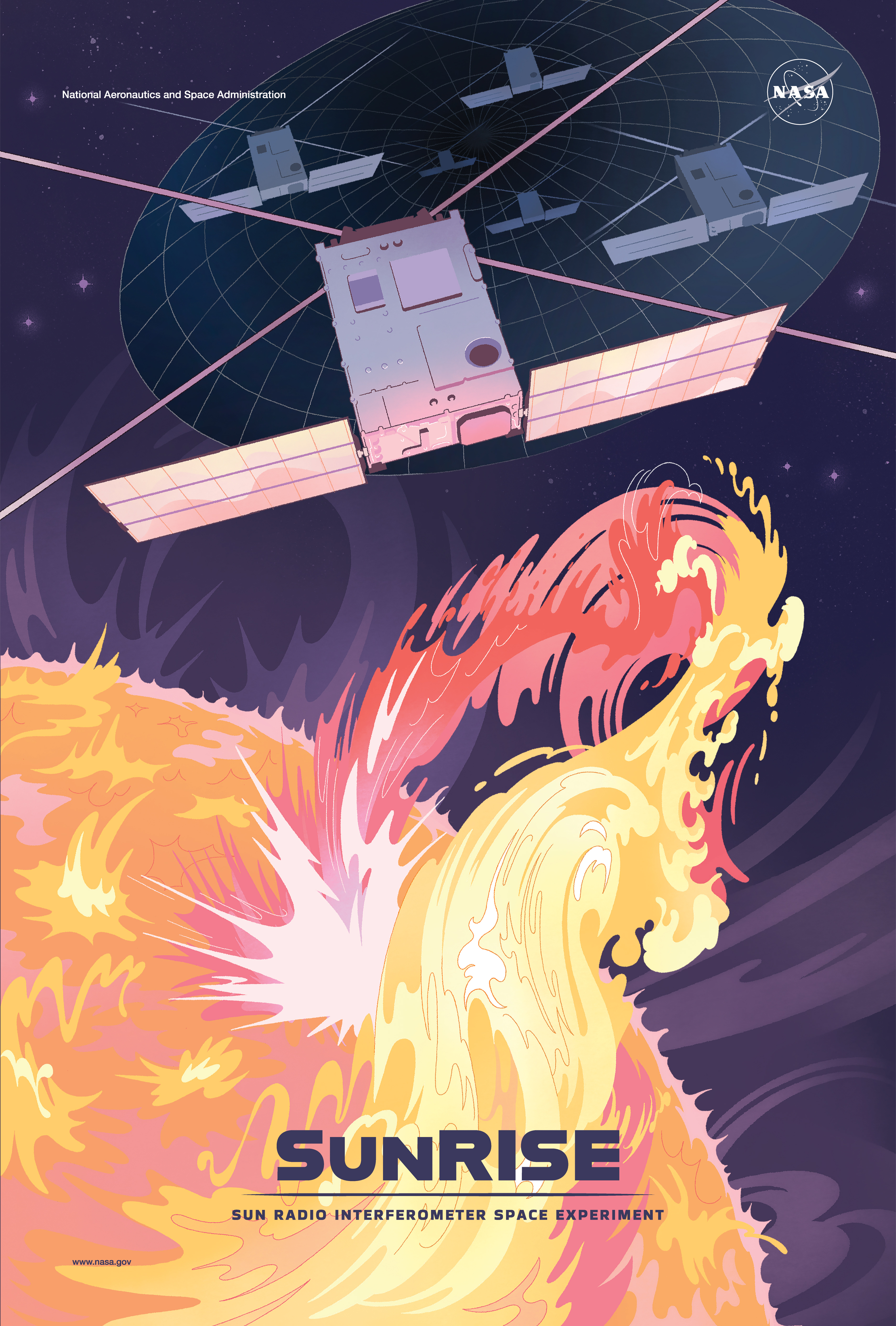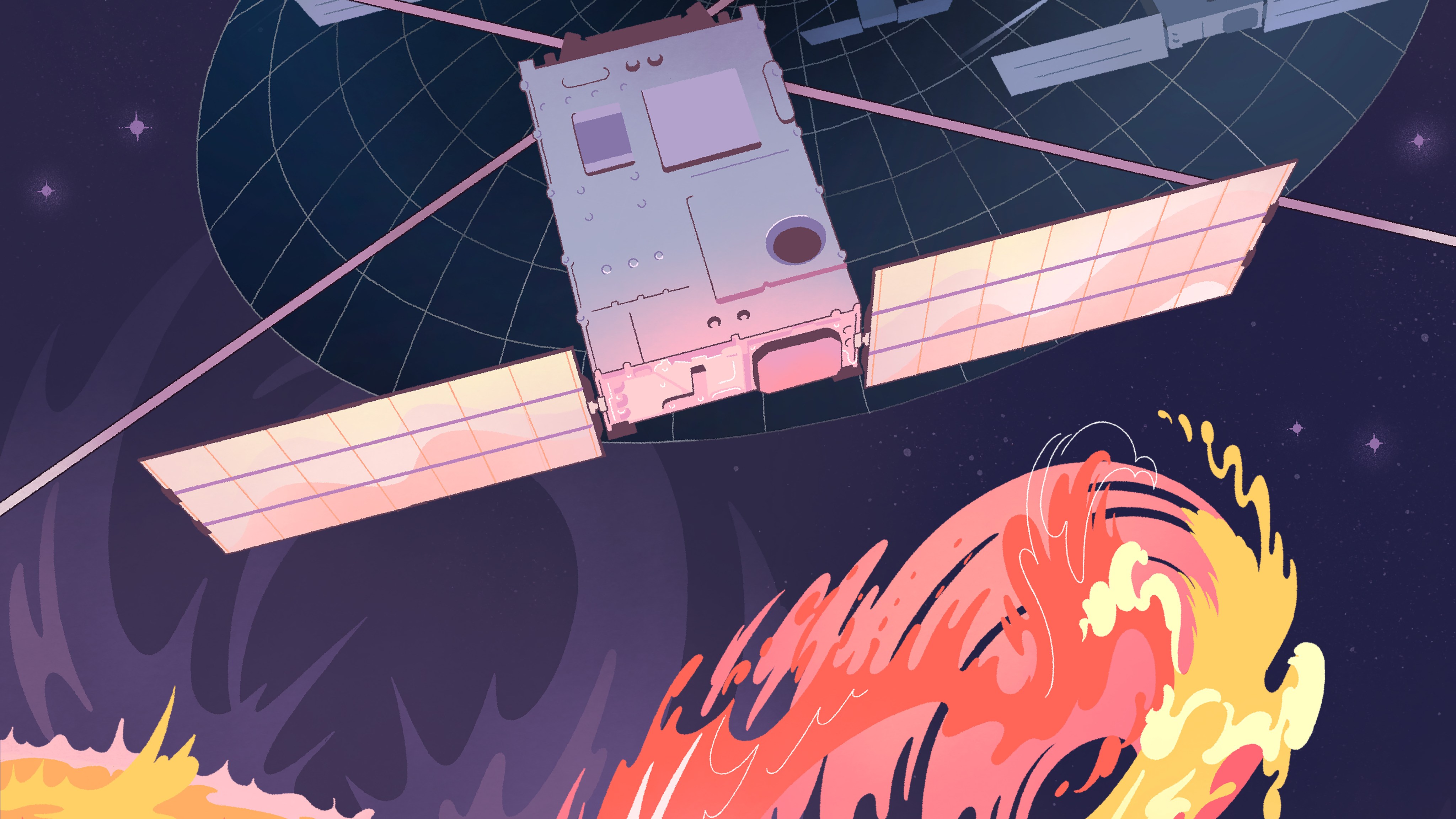SunRISE Poster

| Credit | NASA/JPL-Caltech |
|---|---|
| Language |
|
NASA's Sun Radio Interferometer Space Experiment (SunRISE) mission will send a fleet of six, toaster oven-sized SmallSats into Earth orbit to work together as one radio telescope to investigate radio waves coming from the Sun. By doing this, SunRISE will help scientists better understand space weather events.
SunRISE will detect and study what are known as solar radio bursts, which are emissions of radio waves in the Sun's outer atmosphere, or corona. Radio waves are generated when particles traveling near the speed of light escape from the solar vicinity and they directly point us to the location where the particles originate and are accelerated.
These radio emissions take place just minutes before solar energetic particles (SEPs), which can have enough energy and intensity to affect astronaut health or damage spacecraft, are launched into space during extreme solar events.
SunRISE is led by the University of Michigan in Ann Arbor and managed by NASA's Jet Propulsion Laboratory.

